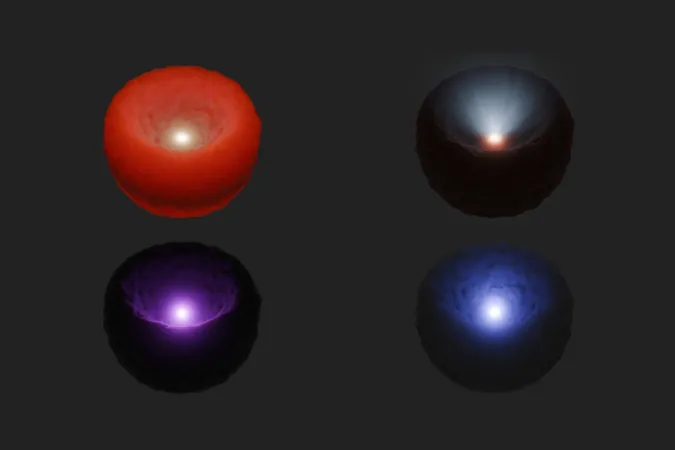
Are We Ignoring a HIDDEN Universe? NASA Uncovers More Supermassive Black Holes Than We Ever Imagined!
2025-01-13
Author: Wai
NASA's Discovery of Hidden Supermassive Black Holes
Recent research by a dedicated team of NASA astronomers has revealed startling evidence that the cosmos may be teeming with supermassive black holes that remain unseen to even the most advanced telescopes. This groundbreaking study has led to a startling estimate indicating that a significant fraction of these colossal entities are obscured from our gaze, fundamentally altering our understanding of galactic formation and evolution.
Understanding Supermassive Black Holes
Supermassive black holes are titanic structures, with masses billions of times greater than our Sun, and their gravitational pull is so intense that nothing—not even light—can escape their grasp beyond a threshold known as the event horizon. Surrounding these black holes is a dynamic accretion disk, comprising superheated gas and dust that creates a vibrant display of light, often masking the true nature of the black hole itself.
Key Findings of the Study
In this revelatory study, researchers discovered that approximately 35% of the supermassive black holes surveyed are shrouded by dense clouds of gas and dust. This marks a noteworthy increase from previous estimates, which suggested that only about 15% were obscured. The team’s findings, published in the esteemed journal The Astrophysical Journal, highlight the potential for a significantly larger population of hidden giants in the universe.
Research Methodology
Utilizing data from NASA’s Infrared Astronomical Satellite (IRAS) and the X-ray observatory NuSTAR, researchers adeptly identified black holes that were edge-on to our view—those that are partially obscured. IRAS specializes in capturing infrared light, which is critical for determining the orientation of these black holes, while NuSTAR focuses on detecting X-ray emissions to confirm their existence.
Implications of the Findings
Poshak Gandhi, an astrophysicist at the University of Southampton and co-author of the study, emphasized the profound implications of these findings: “If we didn’t have black holes, galaxies would be vastly different. For instance, the absence of a supermassive black hole in the Milky Way might mean an entirely different night sky filled with many more stars.” This correlation between the existence of black holes and the structure of galaxies underlines their integral role in cosmic evolution.
The Extent of Black Hole Influence
But the influence of black holes extends beyond mere stars and galaxies. In a remarkable discovery from last year, astrophysicists documented the largest-known black hole jets—powerful streams of particles ejected at near-light speed—named Porphyrion, taking their name from a giant of Greek mythology. These jets stretch an astonishing 140 times the width of our Milky Way, illustrating the far-reaching impact of these cosmic behemoths.
Conclusion and Future Research
As we delve deeper into the mysteries of our universe, this recent research reveals not only the complexities of supermassive black holes but also underscores the likelihood that we are merely scratching the surface of understanding these pivotal entities that shape galaxies and influence the cosmos. The universe may be harboring far more secrets than we dare to imagine!


 Brasil (PT)
Brasil (PT)
 Canada (EN)
Canada (EN)
 Chile (ES)
Chile (ES)
 Česko (CS)
Česko (CS)
 대한민국 (KO)
대한민국 (KO)
 España (ES)
España (ES)
 France (FR)
France (FR)
 Hong Kong (EN)
Hong Kong (EN)
 Italia (IT)
Italia (IT)
 日本 (JA)
日本 (JA)
 Magyarország (HU)
Magyarország (HU)
 Norge (NO)
Norge (NO)
 Polska (PL)
Polska (PL)
 Schweiz (DE)
Schweiz (DE)
 Singapore (EN)
Singapore (EN)
 Sverige (SV)
Sverige (SV)
 Suomi (FI)
Suomi (FI)
 Türkiye (TR)
Türkiye (TR)
 الإمارات العربية المتحدة (AR)
الإمارات العربية المتحدة (AR)